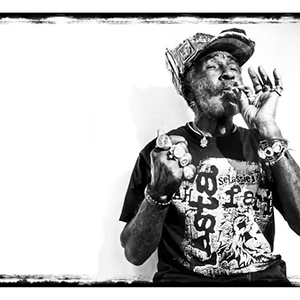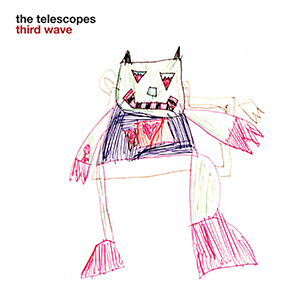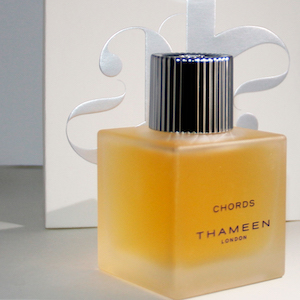BREEZE; The Answer that Blows in the Wind
By Petter Olsson
What does the wind sound like? Your first thought might be a gentle breeze playing on wind chimes sprawled across a countryside house, or perhaps you imagine the percussion of a gale against your eardrums on a rough night’s travel home. Or the wind and rain beating against your window with all its futile rage. The wind has many different sounds. But did you know that there’s an instrument which is not played by a musician, but by the wind itself?

Aeolus, the Greek god of wind, would be pleased to hear that his name had been lent to the Aeolian harp. Strung with 10 or 12 gut strings of varying thickness and elasticity, the harp produces a naturally harmonic sound (through a phenomenon known as standing sound waves) when the breeze flits across its strings. And if you have ever been fortunate enough to hear it, it will come as no surprise that the Aeolian harp’s unbelievable melodies have been steeped in rich symbolism for a very long time.
It had existed in many cultures for a long time, but the first European harp of this kind was constructed by Athanasius Kircher, a German Jesuit scholar known as the Master of a Hundred Arts. When he described it in his Musurgia Universalis in 1650 (complete with Aeolus blowing wind into it) he revealed it to the English Romantic poets who immediately seized upon its wonderful, otherworldly qualities.

Samuel Taylor Coleridge, one of the great English Romantic poets, wrote his poem The Eolian Harp (1795) with the eponymous instrument as its central image. The poem centers around the relationship between humans and nature – and the harp becomes the point at which they converge. When he writes that ‘many idle flitting phantasies, / Traverse my indolent and passive brain / As wild and various as the random gales / That swell and flutter on this subject lute’, he is not just meditating on the nature of thought and imagination.
Coleridge is making a direct link between the movement of thought in the speaker of the poem’s brain, and the movement of the wind on the Aeolian harp. He is beginning to infuse the harp with the enormous symbolic power it has come to possess. Just as the ‘random gales’ that ‘swell and flutter’ on the lyre, imagined ‘phantasies’ travel through the speaker’s brain – a brain as ‘indolent and passive’ as the Aeolian harp itself.
 The Eolian Harp, Samuel Taylor Coleridge
The Eolian Harp, Samuel Taylor Coleridge
The wind playing on the harp, and thought and imagination playing on the brain, produce something outside the possibilities of conscious human action. We cannot make the wind play the Aeolian harp a certain way, and neither can we control the movements of the mind. We can only let them play, and enjoy the ‘idle flitting phantasies’ just as we would enjoy the pulling of the harp’s strings by the wind.
But equally, Coleridge seems to make another, opposite point. His comparison runs in both directions – if his phantasies are like the wind, his brain like the harp, then the wind is also like his phantasies, and the harp like his brain.
 Aeolian Harp, Phonurgia Nova, Athanasius Kircher
Aeolian Harp, Phonurgia Nova, Athanasius Kircher
It may seem a pointless distinction, but the Romantic conception of nature is one which believes that the natural world is more than its physical being. The wind is as divine as the human imagination, and it carries as many sudden revelations of human existence as the idle flitting phantoms bounding through Coleridge.
The breeze can give us answers if we stop and listen to it. The Aeolian harp becomes a powerful symbol not just for the relationship between the imagination and the mind, but also for our relationship to the natural world. It is not just an instrument played by the wind; it embodies the way in which we can listen to the natural world, to understand ourselves. This enduring image of the Aeolian harp stretches far into the modern day.
Nowhere is this more evident than in Bob Dylan’s legendary track ‘Blowin’ in the Wind.’ It may at first seem a strange comparison between Dylan and a Romantic poet, removed from him by an ocean and a century and a half. But the American folk singer owes the Romantics a very sincere debt for what might be his most famous song.
Percy Bysshe Shelley, another of the great Romantic poets, wrote in A Defence of Poetry that ‘Man is an instrument over which a series of external and internal impressions are driven, like the alternations of an ever-changing wind over an Aeolian lyre, which move it by their motion to ever-changing melody.’

Most of us are familiar with the series of rhetorical questions Dylan asks in ‘Blowin’ in the Wind.’ When he asks ‘how many ears must one man have / Before he can hear people cry? Yes ‘n’ how many deaths will it take till he knows / That too many people have died?’ he is interrogating the reasons behind the dark side of human behaviour. And most of us are also familiar with the answer to these questions – ‘The answer, my friend, is blowin’ in the wind / The answer is blowin’ in the wind.’
The song owes no small part of its enduring legacy to the impenetrable ambiguity of this answer to the abstract existential questions it poses. Coleridge and Shelley drew on the Aeolian harp to explain the relationship of the human to thought and imagination, but Dylan is dispersing the answers to his questions about human nature into the wind.

But there is no Aeolian harp for the wind to play. These are no longer ‘idle flitting phantasies’ but sincere lamentations for the misery mankind inflicts on itself. If, as Shelley says, ‘man is an instrument over which a series of external and internal impression are driven, like the alternations of an ever-changing wind over an Aeolian lyre,’ then Dylan very deliberately does not present the lyre.
The breeze still carries all the secret answers. But there is no harp for it to play. The wind still blows, but without the lyre, no one can make sense of it. ‘Blowin’ in the Wind’ has become one of the truly legendary folk songs because it refuses to answer – because it plucked away the Aeolian harp, and left the answer as unexplainable cruelty. Dylan asks why, but the answer is blowing in the wind.
And so – what does the wind sound like? When it plays on the Aeolian harp its trembling harmonies are a delight, the beauty of its function enough to inspire generations of poets, artists, and musicians. It has inspired them to contemplate human nature and existence, to ask why we are the way are. What does it sound like to you?





